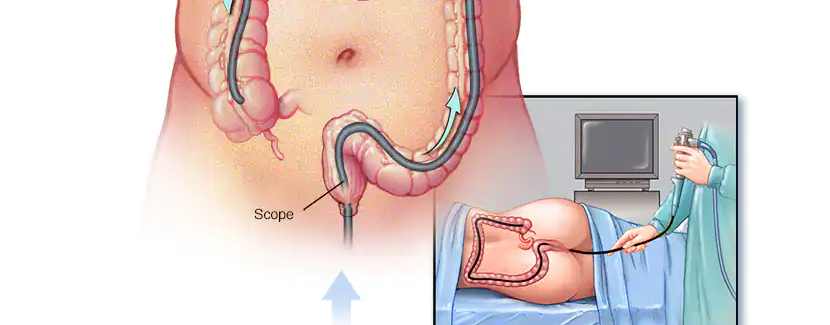Colonoscopy

A colonoscopy is an exam used to look for changes such as swollen, irritated tissues, polyps or cancer in the large intestine (colon) and rectum.
During a colonoscopy, a long, flexible tube (colonoscope) is inserted into the rectum. A tiny video camera at the tip of the tube allows the doctor to view the inside of the entire colon.
If necessary, polyps or other types of abnormal tissue can be removed through the scope during a colonoscopy. Tissue samples (biopsies) can be taken during a colonoscopy as well.
Before a colonoscopy, the patient will need to prepare by following a special diet and taking laxatives to clean out the colon. During the procedure, the patient will be sedated or given pain medication to help them relax and avoid discomfort. After the procedure, the patient may experience some mild side effects such as bloating, gas, or mild cramping, but these usually go away within a few hours. It is important to follow the doctor's instructions for recovery, including avoiding driving or operating machinery for a period of time after the procedure.










